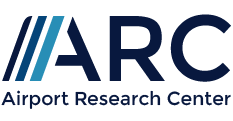CAST Simulation of COVID Testing on Departure
COVID Testing prior to flight departures receives more and more attention. It is not only to reduce the risk of passengers becoming exposed to infected persons during a flight, but also to ensure that as far as possible airlines do not transport infected passengers. Clearly, this would significantly increase the risk of further spreading the virus at the destination location. The current policy of travel bans is critically hindering the recovery of the aviation industry and so safe and novel ways of ensuring safe travel need to be investigated and adopted.
Recently, there have been several initiatives from airports and airlines to conduct COVID testing prior to flight departures. The process of testing at the point of departure is still difficult to manage on a larger scale due to the time and cost associated with evaluating reliable tests.
Nevertheless, it is important to look into the increased possibilities of point of departure testing, particularly as faster and cheaper tests become available. For many aviation stakeholders this is seen as one of the most important components in the drive to significantly reduce or remove travel bans entirely.
In this context it is also important to assess the facility requirements and the detailed processes of a point of departure COVID testing station. Where can it be located? Will it be temporary or will it become an integral component of the passenger journey if COVID (or another virus) impacts for a much longer period of time? How many passengers will need to use the facility during peak time? What are the mandatory functions and what would a suitable layout for an efficient process and operation look like?
In order to assess such questions, simulation is a very useful tool to help airports and airlines in the evaluation and decision-making process for the design and realization of such a checkpoint.
In projects ARC is assessing the implementation of COVID-19 testing areas at point of departure using the simulation software CAST Terminal. The simulation adds the following benefits:
- Testing and understanding the processes and their interdependencies
- Assessing space and capacity and staffing requirements for the new processes
- Visualization of different concepts to support the discussion with stakeholders
- Avoiding expensive planning mistakes and optimizing the checkpoint prior its implementation
Thus, the airport can benefit from a checkpoint ensuring both, health and capacity related requirements. Passengers benefit from a well designed and tested checkpoint focusing on an efficient process as well as acceptable space provision and waiting times that do not severely impact on the flying operations.
Even if the concept of such a checkpoint is still emerging, the simulation model can be adapted accordingly and can support the ongoing re-evaluation of capacity and processing requirements.
Watch the Video
Watch the full video
#cast #castsimulation #airportsimulation #aviation #arc #airport #castterminal #airportplanning #airportoperations #simulation #socialdistancing





